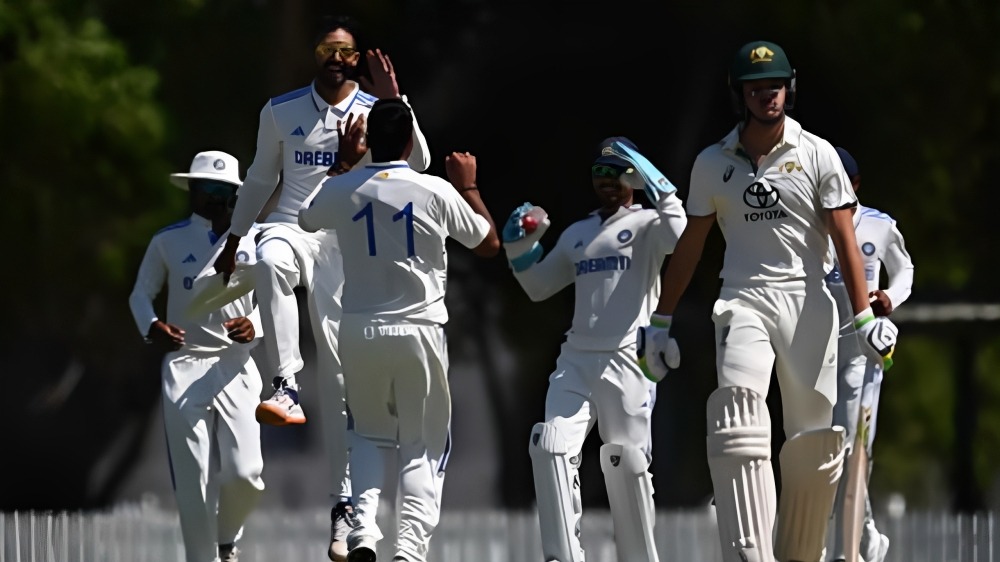In the history of Test cricket, there have been only four occasions when a team has managed to win after being forced to follow on. Test cricket, the oldest and most traditional format of the game, dates back over a century to 1877, when the England and Australia cricket teams faced off in the very first Test match. Unlike ODIs and T20Is, Test matches are played over five days, putting a player’s skill, patience, and endurance to the ultimate test.
What sets Test cricket apart from the shorter formats are its unique rules, one of which is the follow-on. According to this rule, a team batting first can compel the opposition to bat again immediately if it leads by 200 runs or more after the first innings. Enforcing the follow-on is entirely at the captain’s discretion, and once decided, it cannot be reversed.
Captains usually enforce the follow-on to try to secure an innings victory and apply pressure on the opposition. In most cases, teams asked to bat again struggle, making a comeback seem nearly impossible. Yet, in the long history of Test cricket, four remarkable instances defy this expectation—teams have successfully turned the tables and won after being forced to follow on.
Four Memorable Instances When Teams Won After Being Enforced Follow-On in Test Cricket
Test Cricket England vs Australia, 1894

The first-ever victory after being forced to follow-on came way back in December 1894 during a Test between England and Australia at the Sydney Cricket Ground. Australia, led by Jack Blackham, batted first and posted a huge total of 586 runs thanks to George Giffen’s 161 and Syd Gregory’s double century (201).
England replied with 325 runs, and Australia enforced the follow-on. In a remarkable comeback, Andrew Stoddart’s side produced a brilliant second innings with Albert Ward scoring 117 and Jack Brown adding 53. England put up 437 runs, setting Australia a target of 177. Left-arm spinner Bobby Peel then took six wickets to bowl Australia out for 166, handing England a dramatic 10-run victory.
Test Cricket England vs Australia, 1981

In the famous 1981 Headingley Test, England again achieved a win after following-on. Australia, captained by Kim Hughes, batted first and scored 401/9 declared, with a century from John Dyson (102) and contributions from Hughes (89) and Graham Yallop (58).
England was dismissed for just 174, giving Australia a 227-run lead and prompting a follow-on. In an extraordinary turnaround, England scored 356 in their second innings, setting Australia a modest target of 130. Bob Willis then ran through the Australian batting line-up, claiming eight wickets as the visitors were bowled out for 111. Ian Botham’s unbeaten 149 earned him Player of the Match as England triumphed by 18 runs.
India vs Australia, 2001

India became only the third team in history to win after following-on during the 2001 Eden Gardens Test in Kolkata. Australia, batting first, put up 445 runs, and India were bowled out for 171, giving Australia a massive lead of 274.
Following the follow-on, VVS Laxman (281) and Rahul Dravid (180) orchestrated one of the most iconic comebacks in Test history. India amassed 657/7 declared, setting Australia a daunting 384-run target. The visitors crumbled under pressure, all out for 121, as Sourav Ganguly’s men secured a famous 171-run win.
Test Cricket New Zealand vs England, 2023

The latest instance came in February 2023, when New Zealand pulled off a remarkable win against England in Wellington. England, led by Ben Stokes, posted 435/8 declared and bowled New Zealand out for 209, enforcing the follow-on.
In their second innings, New Zealand staged a stunning fightback, scoring 483 with Kane Williamson hitting 132. Chasing 258 for victory, England fell agonizingly short, dismissed for 256. Williamson’s century earned him the Player of the Match award as New Zealand celebrated an unforgettable win.


